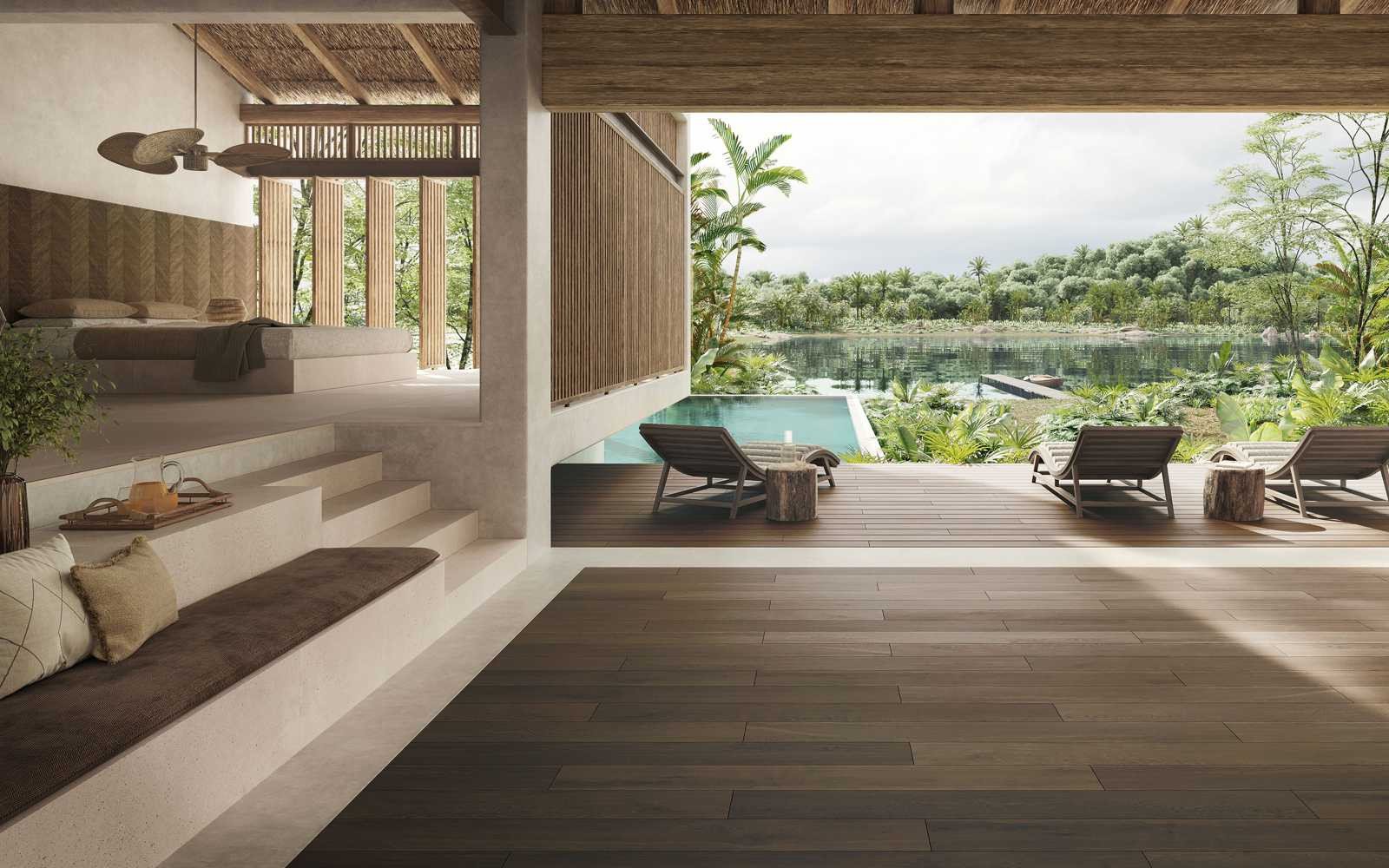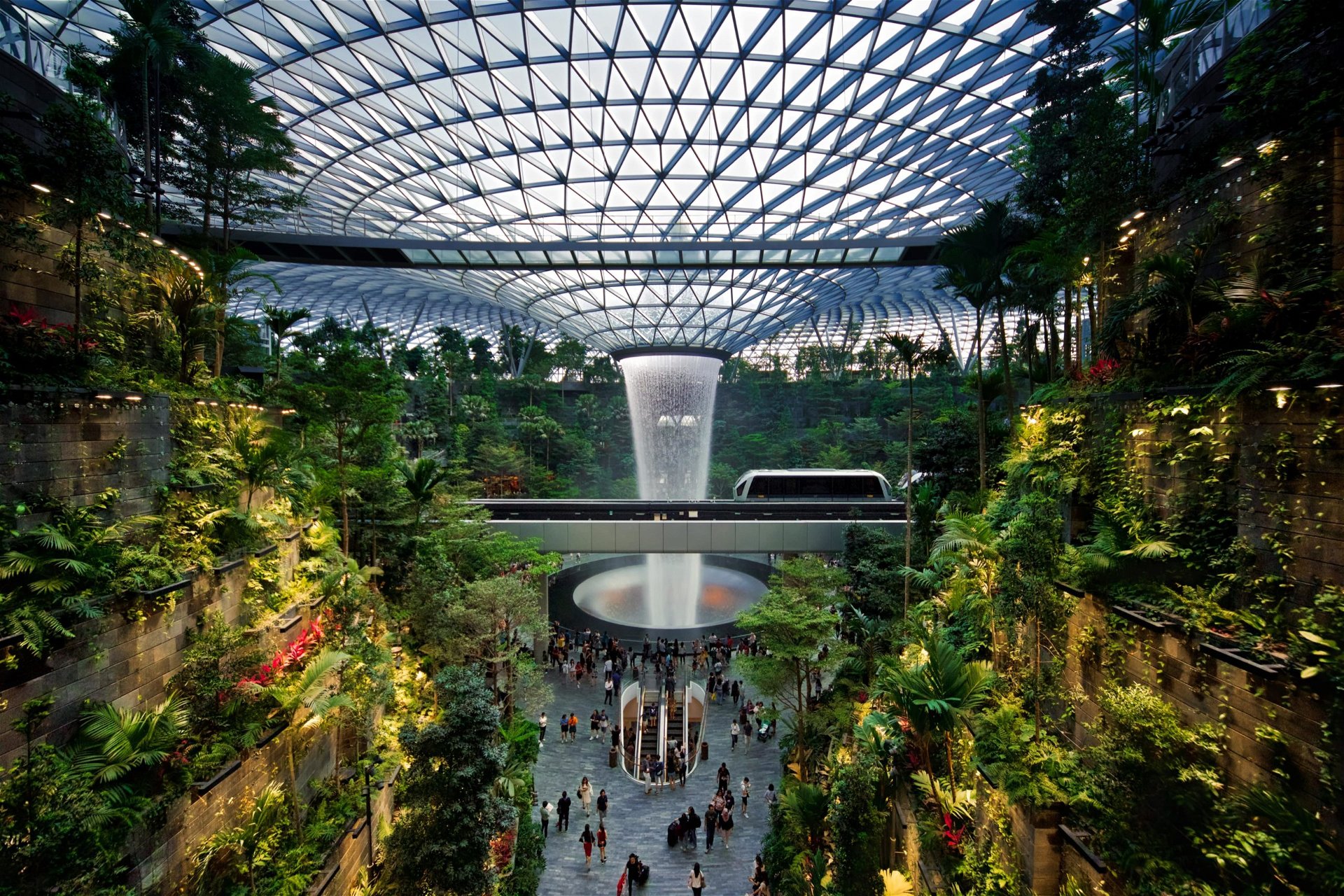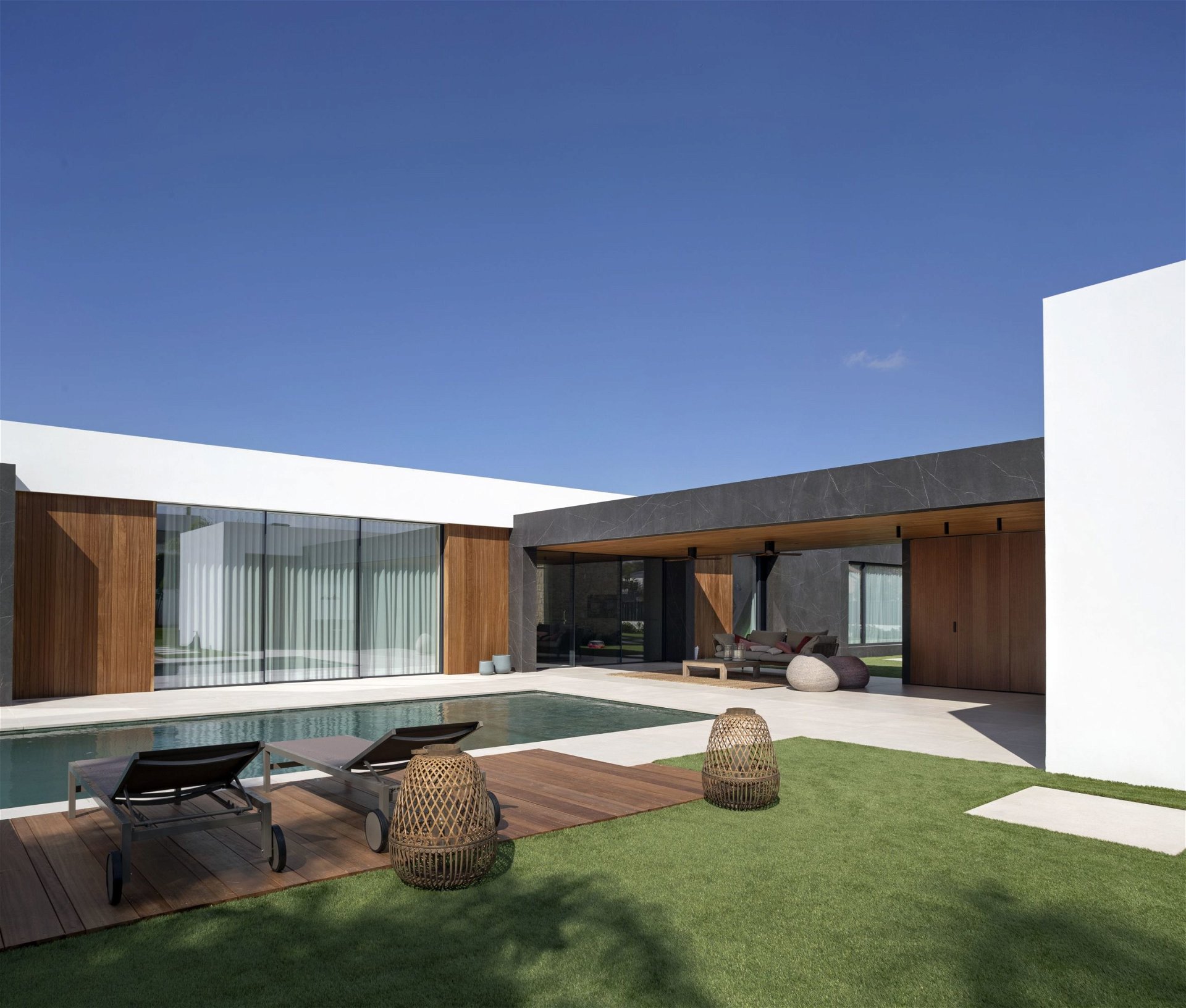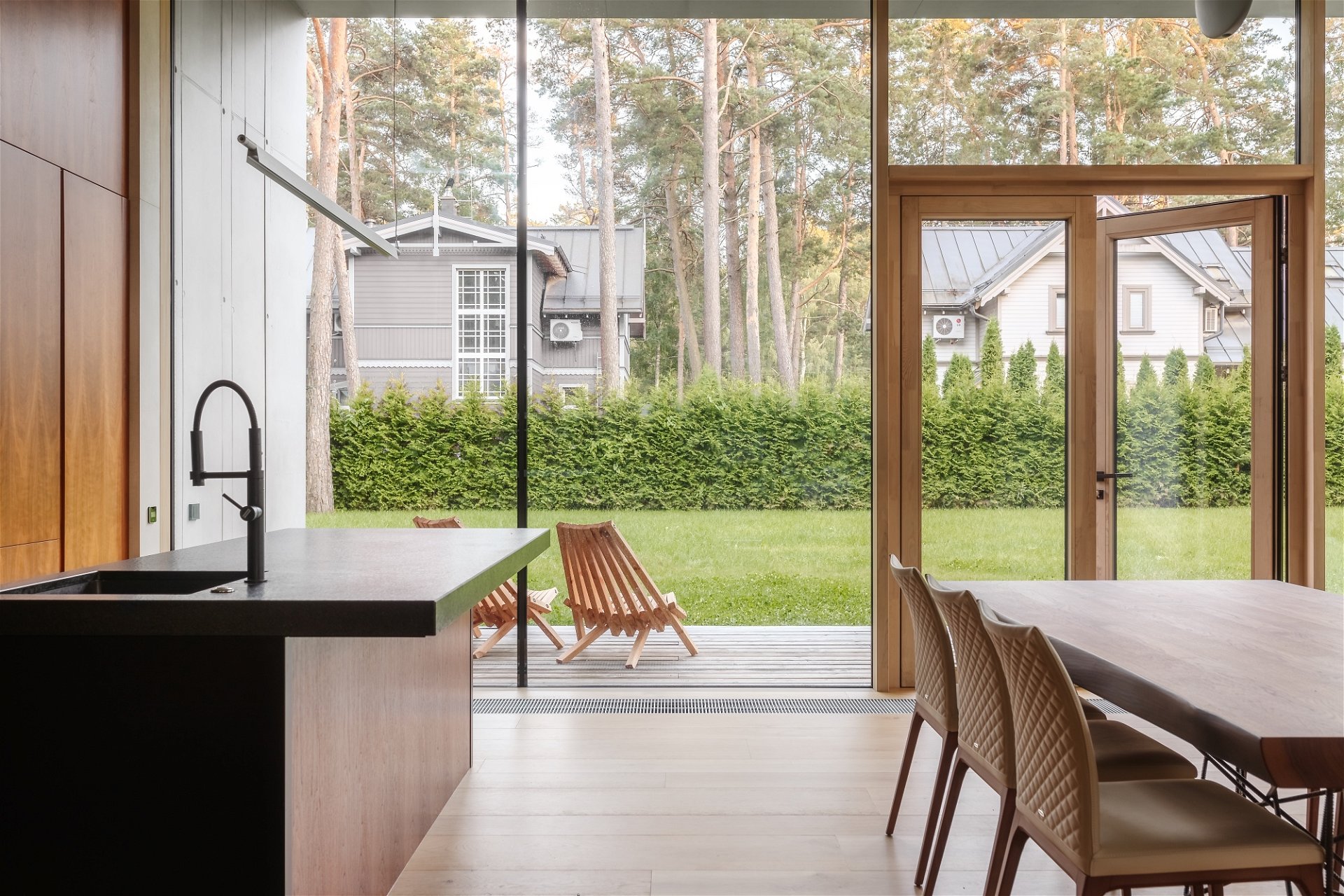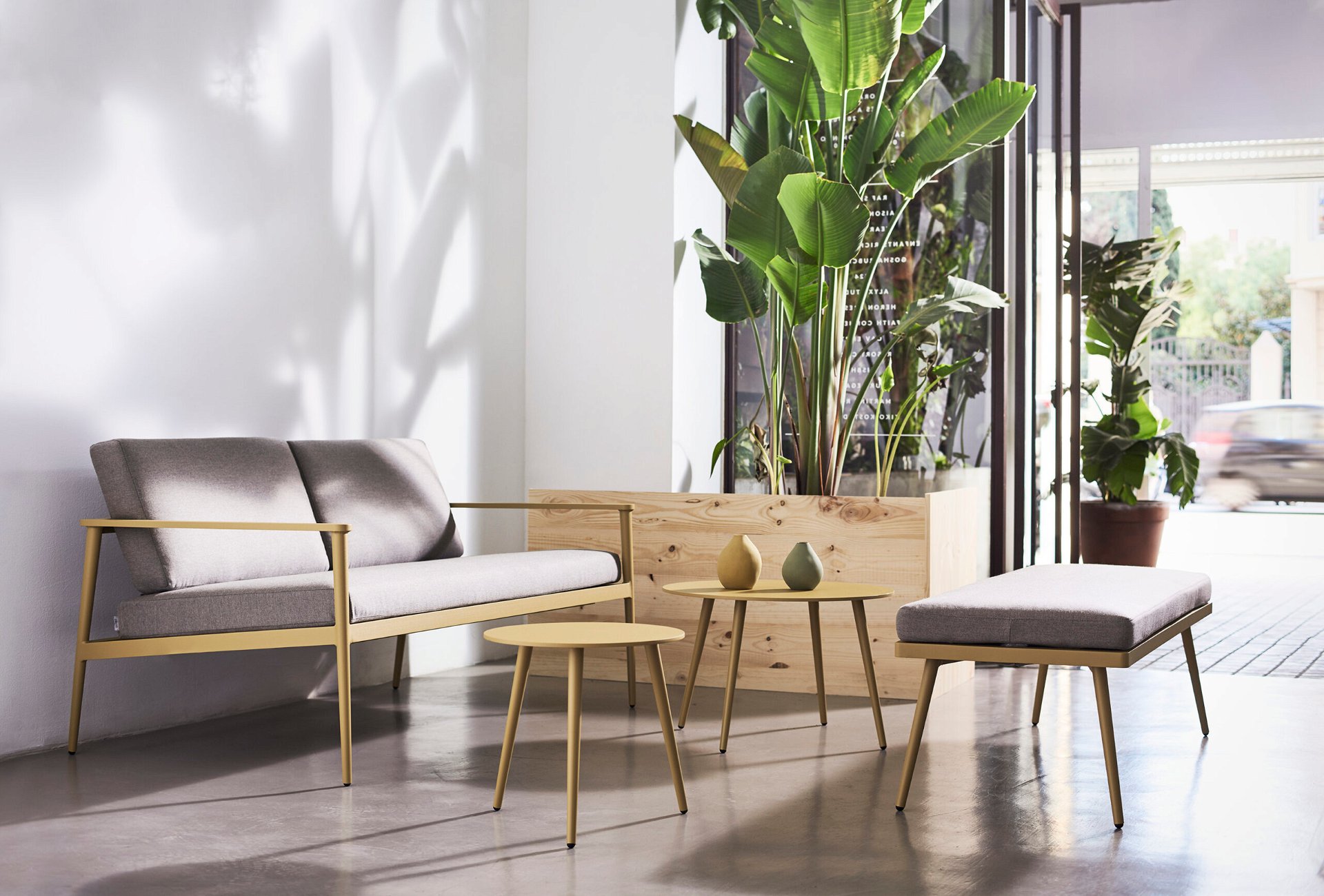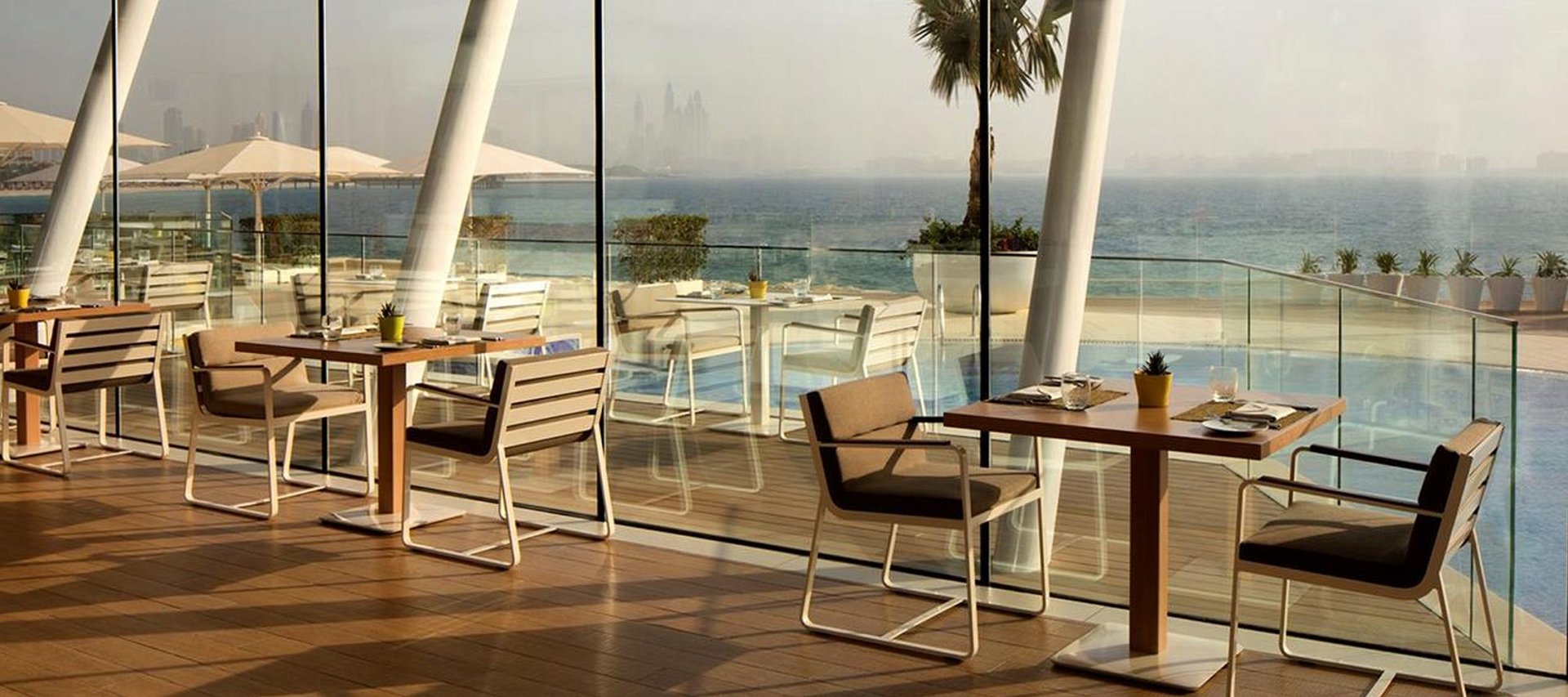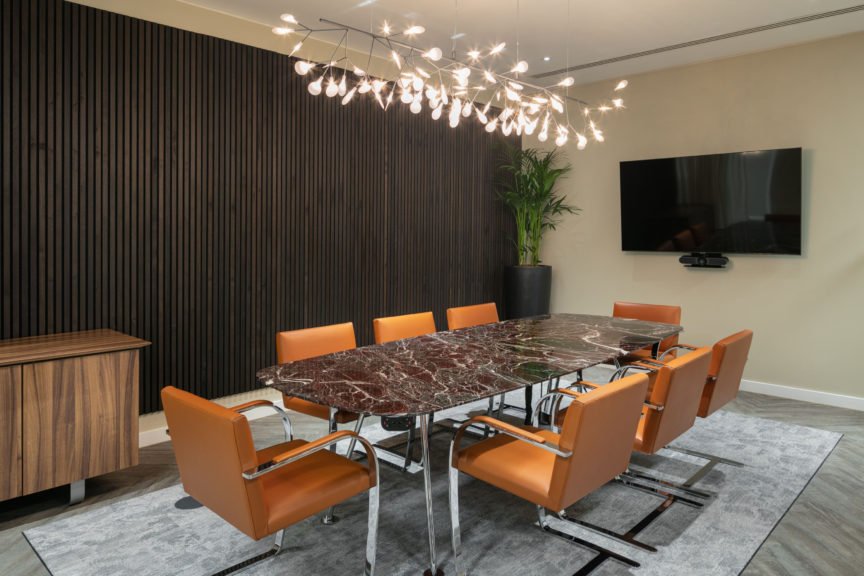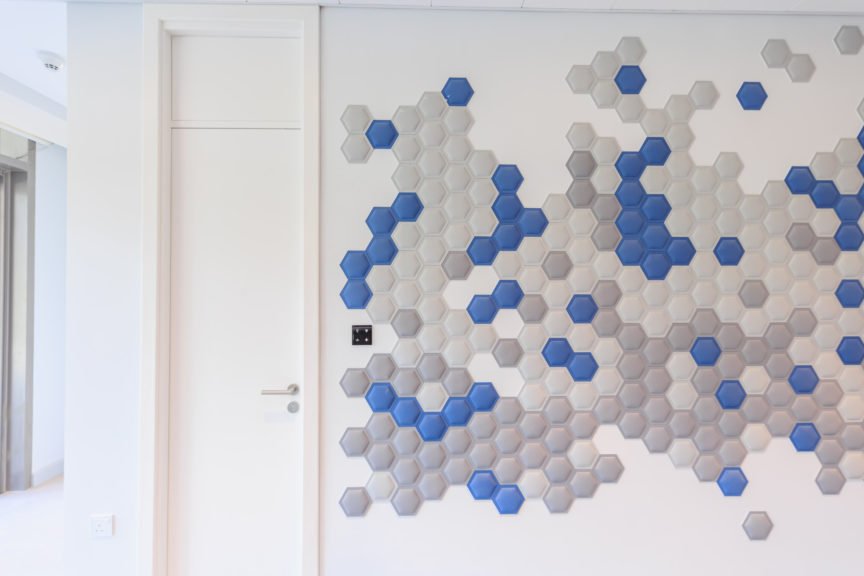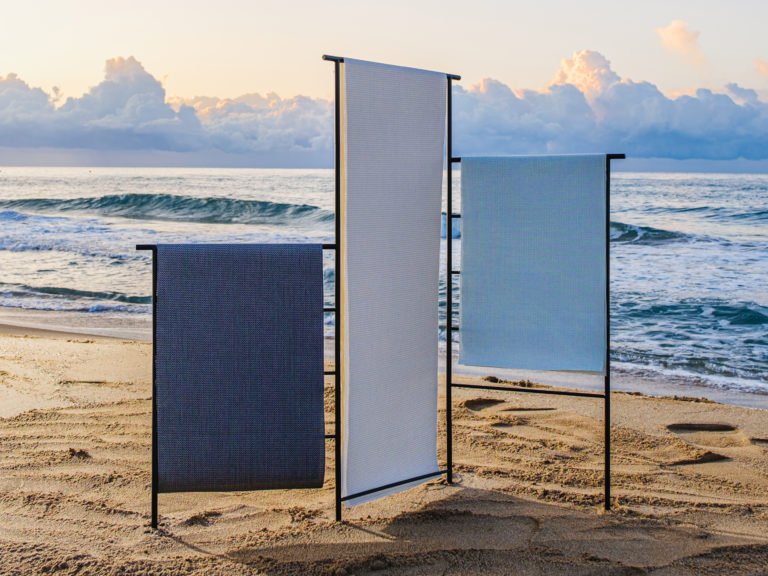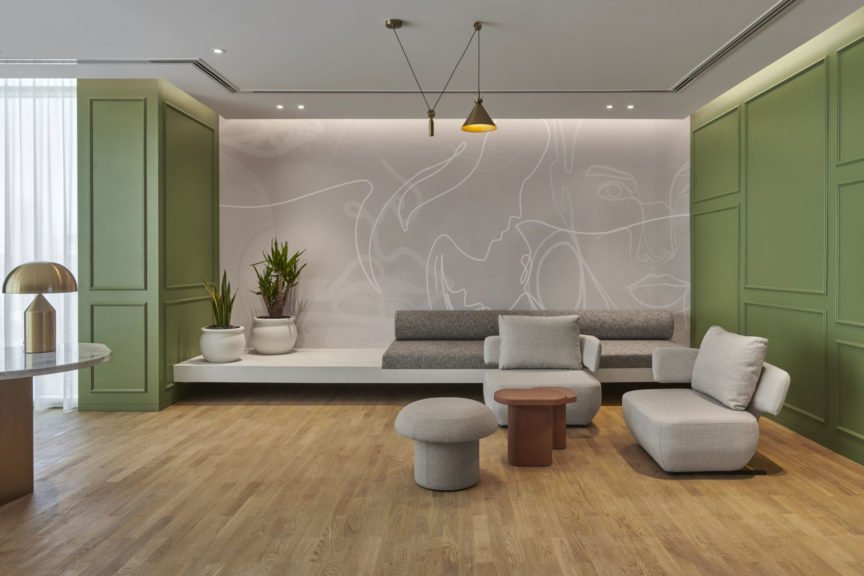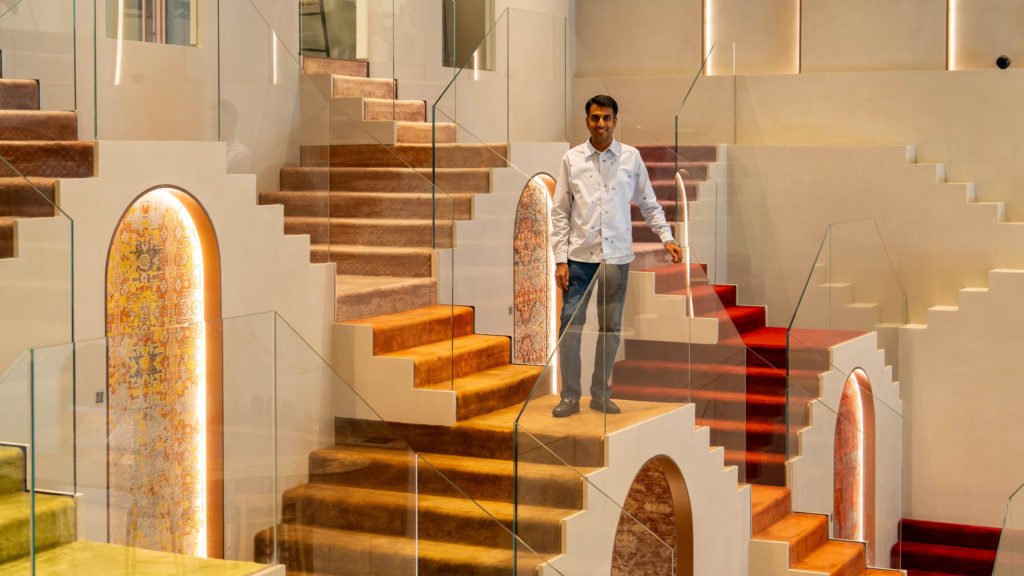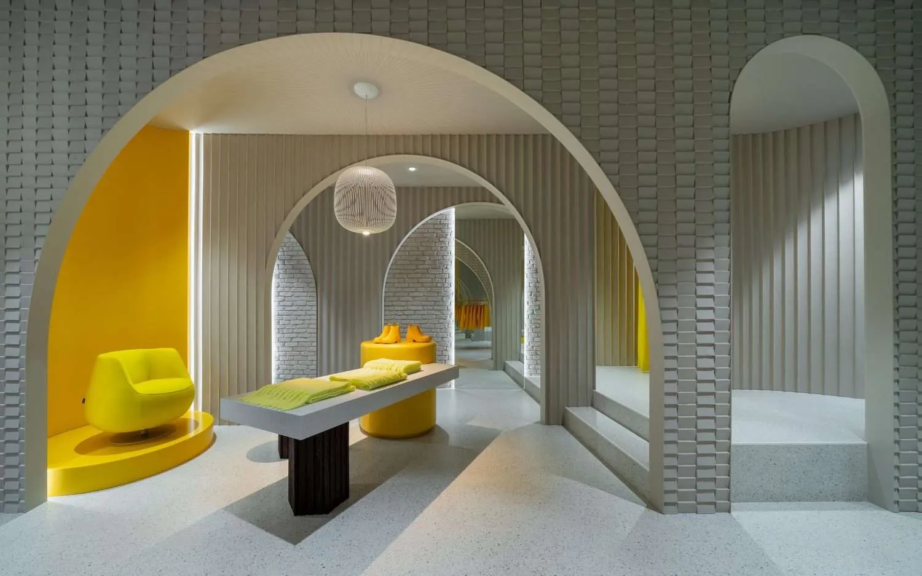Sejal weighs in on biophilia’s potential to enhance various aspects of our lives, apart from a healthy habitat. She states, “Bringing nature indoors has many financial benefits. Office spaces could boost employee health and productivity, while hospitality and retail spaces could maximise visit time and spend.”
Biophilia = Interior Material Palette
Creating interior spaces that evoke the calming and invigorating qualities of nature requires a thoughtful interior palette. Incorporating natural materials such as wood, stone, and organic textiles in furniture, flooring, and finishes enhances tactile experiences.
Studies have indicated that access to nature within built environments can improve cognitive function and memory retention. In other words, biophilic design enhances creativity and clarity of thought and expedites healing.
Quoting similar research, Swati explains, “In learning or working spaces, studies have shown a biophilic element implementation has resulted in an 8% increase of perceived well-being and 13% in creativity, and up to 25% in terms of ease of learning and focus. Similarly, exposure to natural auditory stimuli produced a 37% faster reduction in stress and cognitive fatigue.”
Swati also suggests using wall panelling and finishes obtained from organic materials, such as cork infuse a delightful natural smell. “The antibacterial and acoustic properties of cork make it an increasingly popular choice. Apart from this, designers can also create green walls or incorporate water features like aquariums to integrate nature creatively within the space. The options are simply endless,” she implores.
When it comes to natural materials, wood remains a timeless favourite, complementing various design styles. Take the HOYO7 House in Bétera, for example. The minimalist concept of the modern residence is subtly enhanced by the seamless Advance 1L coffee (natural wood) flooring by Antic Colonial, Porcelanosa. The flooring is manufactured with multiple layers of oakwood and coniferous wood and finished with a matte varnish. With the home’s architecture prompting a seamless connection between the indoor and outdoors, the flooring strengthens the link subtly.
Similarly, another Porcelanosa wooden texture, Oxford Natural, complements the picturesque landscape and concrete wall texture of the House in Jurmala, Latvia. The residence is a great example of employing a range of textures and tints that layers the approach to biophilic design.
Layering can also branch out from surfaces. Opting for natural and sustainable fabrics like organic cotton or linen with nubby textures, woven patterns, and nature-inspired colours and patterns adds visual and tactile richness to the space. For example, the Damero curtain fabric by Equipo DRT combines geometric patterns with 100% linen, while Atlas from the brand can operate as a dainty thin layer between the outdoors and indoors. Fabrics can be used to filter natural light and curate an intriguing play of light and shadow, or they can be used to upholster seatings that blend with surrounding earthy textures.
Biophilia = Interior Space Planning
While material palettes do play a central role in biophilic design, the layout of a space is key to its success. Sejal succinctly puts forth, “Apart from incorporating plants, the single most important element in biophilia is interior space planning. This involves strategically thinking about layouts not only from a functional or aesthetic point of view, but also strengthening the connection between the indoors and out.”
To achieve this, she suggests some effective techniques include ensuring uninterrupted access to views and natural light, strategically positioning workspaces towards windows and incorporating elements and patterns that mimic leaves or waves to evoke emotional stimulation. Additionally, using flowing organic forms in furniture layouts and carving internal courtyards and extended terraces can further foster a harmonious indoor-outdoor connection.
“Designers can also blur the lines between what constitutes an indoor and outdoor space”, Sejal avers. “For example, you can create green indoor zones through spaces like internal courtyards – these can incorporate trees, allow natural light in, and serve as a design feature all in one go.”
Biophilic experiences can be enriched with outdoor garden furniture collections. The go-to wooden options can be traded for environmentally-friendly materials like aluminium. For instance, the Illa Table by Bivaq combines a contemporary design with aluminium legs and an Iroko wooden table top. Additionally, Bivaq offers the Vint aluminium collection, inspired by traditional wooden furniture, which includes the Vint 2-seater sofa and Vint dining armchair. These pieces can be found at the Peralada Wine Spa & Golf Hotel in Costa Brava, exemplifying the integration of nature-inspired furniture in biophilic design.
Even Bab Al Yam Restaurant by GAJ Architects, housed in the iconic Burj Al Arab, uses the Sit Armchairs from Bivaq. Overlooking the azure waters of the Arabian Gulf, the light-infused interiors set a picturesque stage for brunch get-togethers. The Mediterranean design of the chairs in such a setting only amplifies the sophisticated and sunkissed aura.
Beyond Buzzwords: From Trend to Essential Design Principle
Throughout history, humans have sought solace in nature amidst the chaos and sorrow of war and personal struggles. This innate connection with nature gave rise to the principles of biophilia and its significance in promoting well-being through design. With recurring crises like wars and pandemics, the importance of biophilia resurfaces time and again—last found trending during COVID, thanks to the lockdown frenzy and limited outdoor access.
Buzzword or not, biophilia serves as a vital bridge to reconnecting with nature and will always remain relevant in design planning.

